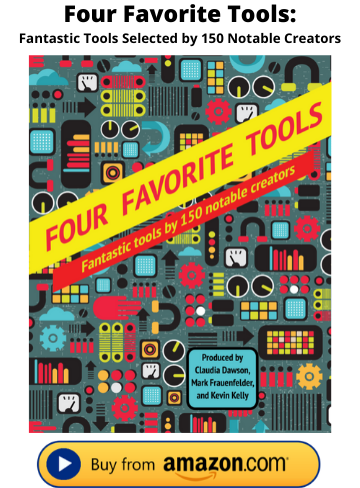Kickstarter School

Premier crowdfunder
Kickstarter is the premier crowdsourcing platform. It offers a way to finance your project by enabling current fans and wanna-be customers to pay you before you do your project. You don’t pay back your backers except indirectly with creative rewards as thanks. Often the reward is a unit of your project — a device, book, game, etc. Kickstarter is not the only crowdsourcing venue, but it is the largest, most active, and the most refined. So far, over 35,000 projects have been successfully funded — all kinds of creative dreams including games, gadgets, documentaries, music, shows, and one-of-a-kind happenings. One of those winners was a project I launched in 2012 — a graphic novel. We successfully raised $42,000 to complete a second book in our fictional universe. Like many financed projects, I believe that if we could not have crowdfunded it, the project probably would not have happened. In this way, Kickstarter is a fantastic cool tool.
There’s an art to running a successful crowdfunded campaign. While there are several guide books that offer advice on how to raise “big bucks” on Kickstarter, none of them (yet) are better than the simple free Kickstarter School section on the Kickstarter site. It tells you how to prepare the essential “video pitch” that seems to be needed, and gives suggestions on structuring your rewards (what backers get by funding you). Yet it is missing some things I wished someone had told me before we began our Kickstarter campaign:
1) We didn’t have enough cheap seats. Have a lot of different levels of support — including a lot of inexpensive ones of only a few dollars — to give everyone a chance to contribute. And don’t be shy about adding a few really high levels either.
2) Don’t rely on Kickstarter to find funders. You need to gather your fans first before you start, and then once gathered, use Kickstarter to engage them with your project. Once you pull the trigger, there’s no time to find new fans — and they don’t come from Kickstarter. Fans first, then Kickstarter.
3) It’s a full time job. Kickstarter campaigns ordinarily run about one month and during that time, it takes almost full time work to cheer, coax, and promote the project to your fans. There is nothing automatic or easy about it. Somebody has to lead the crowd during the whole time.
4) It all happens at the end. Even with successful grants, the bulk of the contributions come in at the end. So don’t stop drumming; keep sprinting till you’re past the finish line.
5) Don’t forget the Man. When calculating how much you need, remember not only to include the cost of delivering your supporters their rewards, but don’t forget the 8% commission Kickstarter and Amazon will take. That’s a hefty chunk of your total that you need to compensate for when setting your goal amount.
I have friends who skipped Kickstarted and opted for other crowdfunding sites. For instance Indiegogo will deliver funds even if you don’t meet your goal (Kickstarter is all or nothing), 33Needs shares profits with backers for ongoing enterprises (Kickstarter only funds projects), and so on. However for most projects I think Kickstarter is the place to start; it’s well crafted. I hope to do another crowdsourced project, but not as large. In fact, while the giant successes get the most ink, what Kickstarter really excels at is financing medium and small projects that one or two people can reasonably achieve.
08/14/14








